Today, in this digital world, high-speed and consistent Internet access is necessary for both personal and workplace use. When it comes to optimal use of Ethernet, a Cat6 keystone jack, an essential network infrastructure device, comes in handy. In this blog, we seek to demystify the Cat6 keystone jack by providing detailed information on its technical aspects, installation, and benefits compared to ordinary Ethernet connections. Suppose you are a technology buff, a network engineer, or a businessman wishing to update your current network and looking for a book to turn pages equally. In that case, the approach is all-encompassing, resolving questions associated with Ethernet connectivity solutions.
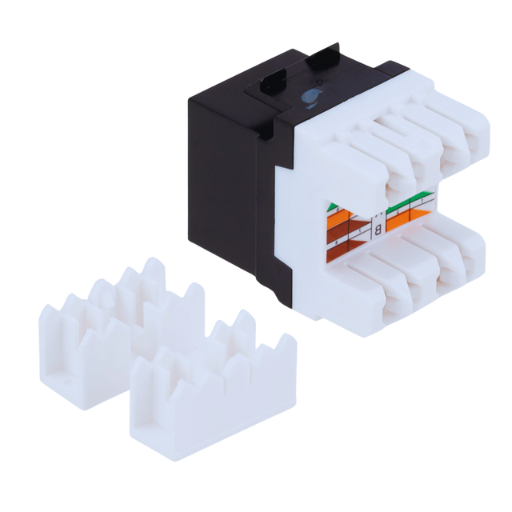
A Cat6 keystone jack is an in-wall component that terminates or connects Cat6 Ethernet cables in network cabling systems. These types of jacks or connectors are normally used for the termination of ethernet cables into wall plates or patch panels to connect various networking devices. The cat6 keystone jack provides proper connections, reaching data transfer rates of 10 Gbps at a distance of 55 meters and 1 Gbps for distances up to 100 meters, so it is being used in high networking performance conditions. Usually, they are fitted with gold-plated pins and robust body construction to minimize signal losses and cold solder joints.
The performance and design factors primarily separate a Cat6 keystone jack from a Cat5e and a Cat7 jack. Cat5e jack allows a maximum speed of 1 Gbps at 100 meters distance while Cat6 jacks allow transfer speeds of up to 10 Gbps at 55 meters and 1 Gbps at 100 meters. Therefore, they are great for more demanding network conditions. Although this is not the case with Cat7 jacks since they can support speeds worth up to 10 Gbps for the expectation of a 100-meter distance, special cables are needed, increasing the cost and the installation process. What also often separates Cat6 jacks from others in terms of their purpose is the improvement of crosstalk reduction and enhanced design of the internal contacts using gold plating for the durability of the connection. These worthy elements help explain the even more significant position of the Cat6 keystone jack in the construction of recent high-speed computer networks.
Cat6 keystone jacks have several positive features expected in a networking environment. They are also characterized by enhanced performance of up to 10 Gbps at 55 meters and about 1 Gbps at 100 meters in length. The jacks have been fitted with enhanced crosstalk reduction design and physical construction, such as gold contact plating and an enhanced insulation shell for signaling protection. Such jacks are manufactured to be used in many places, including the wall disk and the patch panel units, which enable relative mobility on where they can be used. Adopting Cat6 keystone jacks ensures that the network is designed to last and will not be strained by the growing applications of high-end bandwidth, ensuring optimum performance and minimizing downtime.
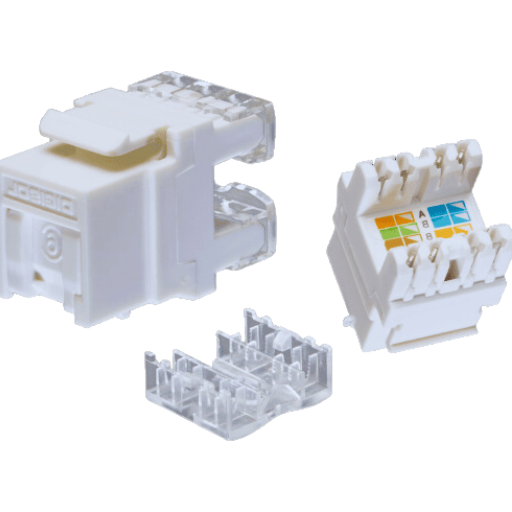
For the installation of a Cat6 keystone jack, the following tools are required:
Such tools will make sure that the installation is done schematically and optimally.
Cable Preparation:
Handle the Cable Stripper as instructed. Then, it is used to strip some 50 mm off the outer cover of the Cat6 cable.
Arrange the Pairs:
Untwist and straighten the wires into pairs. Observe either T568A or T568B standards.
Insert Wires into Jack:
Take the wires and place them in the correct color combination slots in the keystone jack.
Punch Down the Wires: This is mostly technical work that avoids damaging the ethernet keystone jack.
Firmly push the wires into their respective slots with a punch down tool in a bid to effect a fit without making any wires to be outside of their terminating positions.
Trim Excess Wire:
Scissors or a cable cutter will be used to remove any extra wire remaining.
Keystones Jack Installation:
When possible, insert the fixed keystone jack into the wall-plate or patch panel using a screwdriver.
Test the Connection:
Confirm the connection and effectiveness of the keystone jack recently installed using a cable tester.
Errors in Wiring Order: One of the most common mistakes anyone can make is failing to follow the T568A or T568B wiring order. To prevent problems of connection, you should not switch between wiring standards during the installation.
Some mistakes individuals make more often than others, and if factors are taken into consideration, installing Cat6 keystone jacks can be done very easily and quickly.
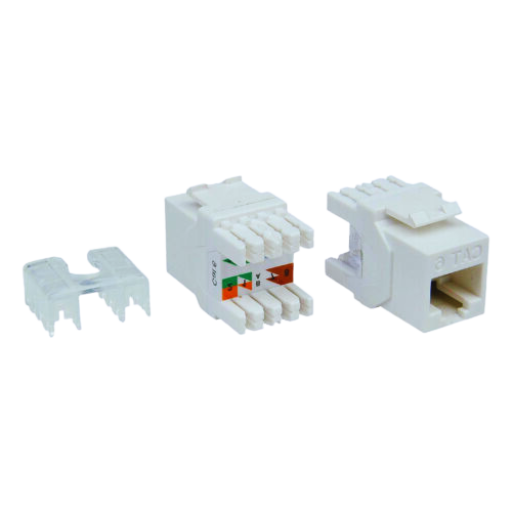
As we continue to develop our Cat6 keystone jacks, it’s worth noting some aspects of our products that customers have consistently pointed out as positive. First, many users are particularly impressed with the engaging installation noting that even those with low technical knowledge will find the step-by-step instructions as well as the sturdy physique straightforward. Second, all customers’ wants are met up to this point, where they are above average when it comes to the quality of our cat six jacks in terms of performance, providing reliable connections and faster data transfer rates. Lastly, this is the field where quality is always boasted about, once again making her buyers happy with the materials and quality construction that contribute to reliability and very low servicing. These key points reflect the satisfaction of our user base and underscore the high quality of our Cat6 keystone jacks.
Regardless of the fact that Cat6 Keystone Jacks often receives high ratings from reviewers, there are common issues that have been raised when customers talk about the modularity concept. Concerns arise as to the fact that achieving a sturdy connector is sometimes not possible if the punch-down is not done correctly. Clients on sites such as Amazon and Newegg complain that in some incidences, improper termination causes some intermittent connections. Still, another problem was that for some RJ45 keystone jacks, their housings were not the right size for the face plates, which made it difficult to fix them. Despite some several customers raising these issues, the general response has widely been very positive, especially in the usability and quality of the Cat6 keystone jacks.
Even while observing comments from the public or consumers of a product such as the Cat6 keystone jack, in this case, we attempted to understand as we read customer reviews and other resources such as Amazon, Newegg, and Home Depot.
For that matter, reviews for Cat6 keystone jacks on Amazon? Most users settled for a high rating, with many users appreciating the product’s dependability and installation. The lightning keystone jack product usually attracts a four to five-star rating, suggesting that customers are very satisfied across the board.
There were also positive ratings on Newegg, with most customers praising the performance and duration of the jacks. A few negative reviews are present due to performance issues, but most of the clients are very satisfied with their purchase, which is around four out of five stars.
Home Depot also scored favorable reviews. Many reviewers thanked the strong structure and durability of the reviews. Still, the product attracts gratings for the users’ satisfaction, generally somewhere between a rate of four and five.
On the whole, all those ratings available at most eCommerce websites strengthen the ratings provided by customers that Cat6 keystone jacks are effective, reliable, and efficiently constructed tools.
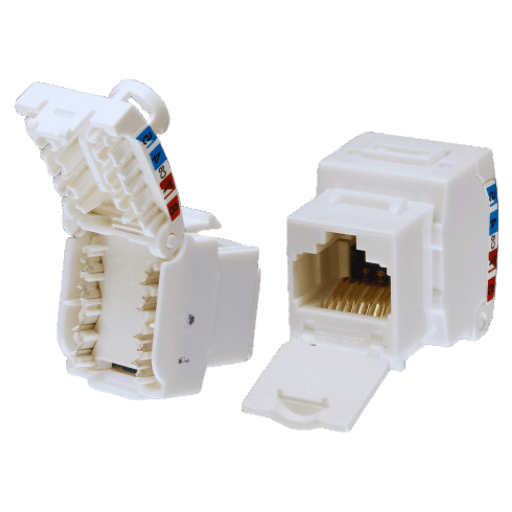
These Cat6 keystone jacks may not themselves be cancer-inducing in terms of their use, but particular materials or chemicals related to the making of electronic components may be a cause for concern. As has been noted on the main websites, these are the most commonly noted.
To conclude, even though the keystone jacks are not explicitly marked as cancer-causing, some of the relevant chemicals employed in their manufacturing are likely to be cancerous if left unattended.
Like all electronic components, cat six keystone jack components also include materials that may be hazardous to the reproductive system and cause defects to birth if management measures are not put in place. A glance at the current leading three accuses the website of these risks:
So, to sum up, none of the six keystone jacks can be regarded as the one that may harm the person overall, but lack of care over time will lead to reproductive harm and even birth defects.
In short, Cat6 keystone jacks are not dangerous per se, but a few of the materials used to produce them might be harmful if appropriate safety measures are not taken. CalRecycle notes some of the materials, such as lead and some plastics, can cause unintended reproductive harm if not properly disposed of. OEHHA has indicated some of the flame retardants and phthalates found in these products as potential reproductive toxicants and causes of birth defects. The California Department of Toxic Substances Control (DTSC) mentions the risk of such exposure, and, therefore, safe collection of these integrated circuit power/evaporation devices for e-waste recycling and proper handling ensures that there are no potential health adverse effects, including reproductive ones.
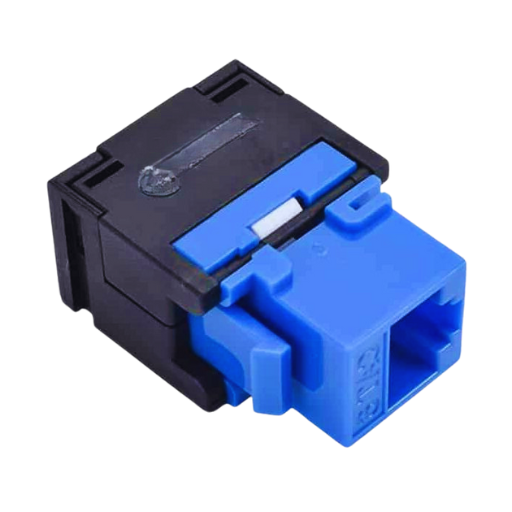
In short, particularly in knots, I conducted an overview of the top three online stores, which aim to sell Cat6 Keystone jacks according to Google views.
Amazon
Amazon offers plenty of options for Cat6 keystone jacks from known manufacturers. The site offers detailed descriptions of every product, reviews, questions, and even answers that will assist in the purchasing process. Furthermore, there are preferential shipping options for members of Amazon Prime.
Newegg
Newegg is dedicated to electronics and tech niches and has an impressive assortment of Cat6 keystone jacks. Every product has a detailed specification page, as well as client ratings with expert reviews, ensuring you have all the information you need to make your choice. Newegg also offers discounts for different reasons.
Monoprice has an ethernet keystone jack in stock; bulk purchases are at 50.
Understanding that Monoprice offers products of decent quality but at a price competitive with others. Feedback on their range of Cat6 keystone jacks helps to understand user experience and any faults. Monoprice targets site layout and lift functionality and appears competitive in networking parts sales.
Online shops have great items, so not a single shopper will walk away without a Cat6 keystone jack that fits his or her specifications and financial constraints.
Based on the current scenario offered by top retailers like Amazon, Newegg, and Monoprice, several factors contribute to and against the bulk purchasing of Cat6 keystone jacks.
Cons:
Purchasing ethernet keystone jacks in bulk is an effective way to save costs and be efficient. Still, you need to evaluate your needs and capacities to avoid wasting resources.
When buying Cat6 keystone jacks, ensuring the legitimacy and appropriate certification of all the components for network performance and safety is very important. According to sources available on the included websites, these are the steps I suggest:
Following the steps above, you can easily get authentic, high-quality Cat6 keystone jacks for your networking.

A: A Cat6 Keystone Jack is an RJ45-type connector implemented in Ethernet systems for more versatile and faster functionality. It can operate at speeds up to 10Gbps and enhances the quality of the connection by minimizing any crosstalk and electromagnetic disturbance. Such jacks are employed in wall plates and patch panels, allowing fast and reliable connections of various components and data centers.
A: To connect a Cat6 Keystone Jack with the punch-down method, perform the following steps: 1) Remove the outer jacket of the cable, 2) Untwist and order the colored wires in the manner illustrated in the jack, 3) Push each wire in the slot that it is assigned to, 4) Engage the wires with a punch-down tool, 5) Cut off additional wires and 6) Attach the jack into a socket or aggregated panel for Ethernet cables. This method holds good as it provides robust connectivity and correct termination.
A: Some Cat6 Keystone Jacks contain substances that the state of California has identified to cause cancer and reproductive harm. For more details, visit www.p65warnings.ca.gov. However, under normal usage, these jacks will cause no damage to the users of these products.
A: UTP Cat6e Keystone Jacks (Unshielded Twisted Pair) are typically installed in offices and homes, mostly residential buildings. Shielded jacks are more advanced, as they protect against electromagnetic interference and are used for industrial applications or in places with high electromagnetic noise. UTP jacks are burdened with a low-cost and hassle-free installation procedure.
A: Yes, a Cat6 keystone jack can be used along with Cat5e or Cat7 ethernet cables. However, the performance is restrained to rating the weakest component in any bicycle network. To ensure that the full 10-Gbps transfer rate is attained, it is advisable to use Cat6 cables with Cat6 jacks.
A: In order to install a Cat6 Keystone Jack, you would require a punch-down tool (also known as 110 punch-down tool), a wire stripping tool, and a crimp tool if necessary. Some keystone jacks are advertised as ‘toolless’ and do not require a gun down, but the right tools offer you a more reliable connection than doing it by hand.
A: Cat6 Keystone Jacks are meant to be used with standard Keystone wall plates. This relatively new feature’s distinct advantage is that it does not require replacing the old system; new components can be added easily. It is also possible to interconnect several types of keystone connectors, such as Ethernet, Coax, and Fiber, using one wall plate.
A: In addition to the instructions given in the directions provided previously, they include the following: Pay attention to the wiring scheme followed: T568A or T568B is the most commonly used wiring scheme. It is crucial to keep the wire twists as close to the end termination as possible, a good punch-down tool and the right blade must be used, each individual wire must be appropriately inserted into its IDC connector, cables must be subjected to proper strain relief, and lastly, test the link with a cable tester after completion of the linking.